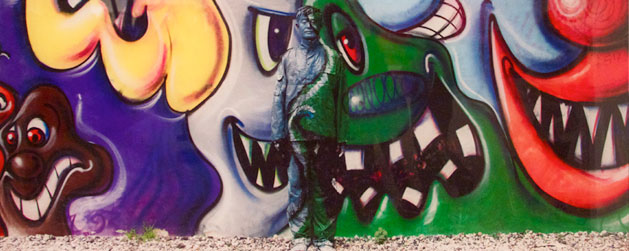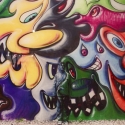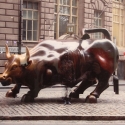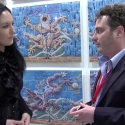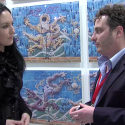Liu Bolin is famous for disappearing and is sometimes referred to as “The Invisible Man”. When examining one of his many photographs of natural settings or recognized cityscapes – New York’s Wall Street or Beijing’s Forbidden City — and suddenly you may notice a wrinkle or line, revealing the chameleon himself. The artist paints his own body to perfectly simulate the setting behind him, as if he was undistinguishable and one could look right through him. He has been covered by the New York Times, The Wall Street Journal and on CNN, and his physical trompe l’oeil has now become an Internet sensation.
You can see Liu’s work in the upcoming exhibit “Performing for the Camera” at the Arizona State University Art Museum from February 4 – March 19, 2012.
The following is an interview with Eli Klein, head of Eli Klein Fine Art, the New York and Beijing-based gallery that represents Liu Bolin.
Trenda: Can you describe the work of artist Liu Bolin?
Kline: He is the master of camouflage. He is described as the “invisible man.”
Trenda: Would you primarily describe Bolin as a performance artist?
Kline: No, he is much more. I describe him as an artist.
Trenda: What makes Bolin’s work so intriguing right now at this moment?
Kline: People are interested in his work because of multiple aspects: It’s not just a performance, but also a painting and a photograph. This reaches a wider audience. We look at the photographs as documentation of these mediums, and this is what we sell. But he is also an accomplished sculptor as well.
Trenda: Does he take all the photographs himself?
Kline: He sets up the photograph himself. He has assistants, obviously, because he can’t be in two places at once. But he is the artist. He is the one doing everything.
Trenda: Chinese artists have a lot of currency in contemporary art world at the moment. Why do you think that is?
Kline: [China’s] economic power in the world creates a strong presence in the contemporary art world. They are doing such a great job internally by supporting the arts through education, museums and other funding. Contemporary art is part of the Chinese culture. It’s not a phenomenon as some people respond to this. It will continue to explode and hopefully will be widely collected in the west.
Trenda: Does that come from the Chinese government allowing more western ideas to be accessible on the Internet and a part of the daily life in China?
Kline: Yes. Contrary to what you hear in the media, they are allowing more images to surface with fewer constrictions. If you agitate the government, they will bite back.
Trenda: What made you decide to represent him?
Kline: We have represented him for over four years. I thought he had an important message in his work. His work is also aesthetically pleasing, and the reaction is phenomenal. You have the best of everything.
Website: www.ekfineart.com
